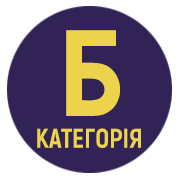USE OF MEDIA EDUCATIONAL TECHNOLOGIES BY MATHEMATICS TEACHERS IN THE LESSONS TO STIMULATE STUDENTS' COGNITIVE ACTIVITY
DOI:
https://doi.org/10.32782/ped-uzhnu/2024-3-10Keywords:
mathematics teachers, media educational technologies, stimulation of students’ cognitive activity, mathematics lessons, educational process.Abstract
The educational process is constantly changing, adapting to the requirements of modern society. The requirements for the training of students in the secondary education system are becoming increasingly high, as they must have systematized knowledge, skills and abilities for effective use in life and further education. Activation of students' cognitive activity is an important direction for improving the educational process. One of the ways to stimulate cognitive activity is the use of media educational technologies, such as the Kahoot! service, in mathematics lessons. This makes it possible to involve students in active participation, develop their critical thinking and contribute to a better assimilation of the material. The use of such tools also contributes to the development of communication and collective skills, which are important in today's world. Improving the quality of education in secondary education consists in stimulating the cognitive activity of students and bringing the quality of this activity to the level of self-education and the ability to self-realize this principle at a certain stage of education. To achieve this goal, it is necessary to combine traditional methods with modern technologies, providing students not only with knowledge, but also with the skills of independent learning and development. It can be noted that traditional teaching methods do not always meet the needs of modern students and their intellectual capabilities. Media-educational technologies can play an important role in stimulating students' cognitive activity. They allow teachers to engage students in the learning process through interactive methods that generate interest and active participation. However, there are indeed contradictions between these needs and the insufficient level of methodological support for their implementation. It is also important to take into account the level of formation of students' cognitive activity and work on its further development. Therefore, the development and implementation of modern teaching methods based on media educational technologies require a comprehensive approach and cooperation between teachers, methodologists and other specialists in the educational process to ensure their effectiveness and compliance with modern requirements.
References
Бурцева О.Г. Курс за вибором здобувачів освіти спеціальності 014. Середня освіта (Математика) «Медіаосвітні технології в професійній діяльності вчителя математики». 2-е вид., переробл. та допов. Мелітополь: ФОП Однорог Т.В., 2021. – 96 с.
Концепція впровадження медіаосвіти в Україні. URL: http://www.ispp.org.ua/news_44.htm
Концепція нової української школи [Електронний ресурс]. Доступно: https://mon.gov.ua/storage/app/media/zagalna%20serednya/nova-ukrainska-shkola-compressed.pdf
Медіаосвіта та медіаграмотність: підручник. Ред.-упор. В. Ф. Іванов, О. В. Волошенюк; За науковою редакцією В. В. Різуна. Київ: Центр вільної преси, 2012. 352 с.
Онкович Г. Медіа-педагогіка і медіа-освіта: поширення у світі. Дивослово. 2007. № 6. С. 2–4.
Ярослав Н. С. Пізнавальні психічні процеси та пізнавальна діяльність особистості : навч.-метод. посіб. / Н. С. Ярослав, В. С. Король. – Ніжин : Вид-во Ніжинського держ. педагогічного ун-ту ім. Миколи Гоголя, 2004. – 110 с.
Kahoot! – онлайн-сервіс для створення вікторин, дидактичних ігор і тестів. https://naurok.com.ua/kahootonlayn-servis-dlya-stvorennya-viktorin-didaktichnih-igor-i-testiv-151085.html







